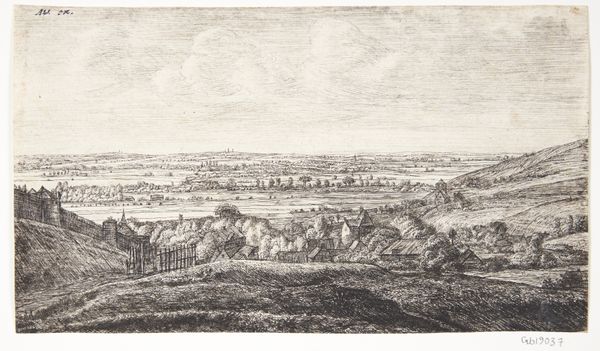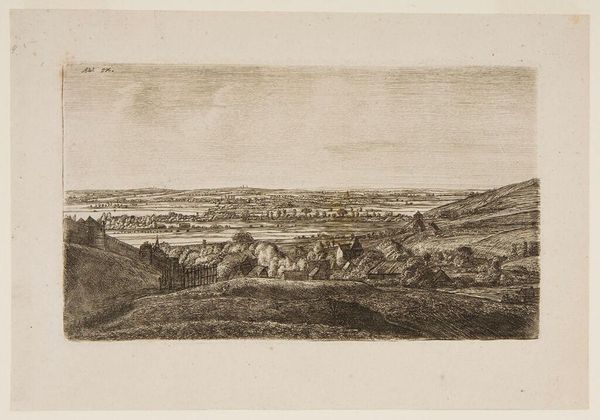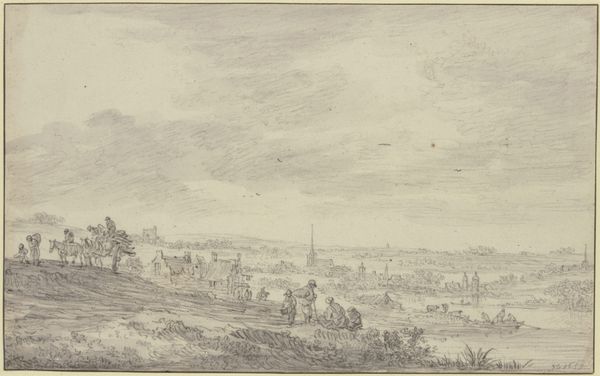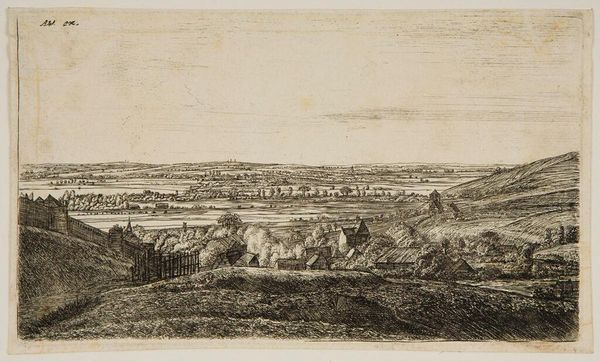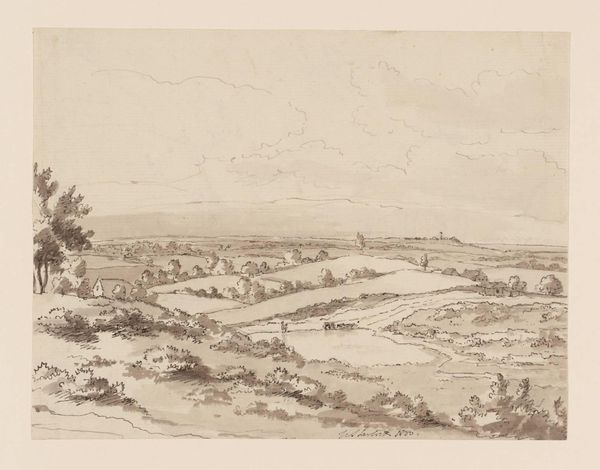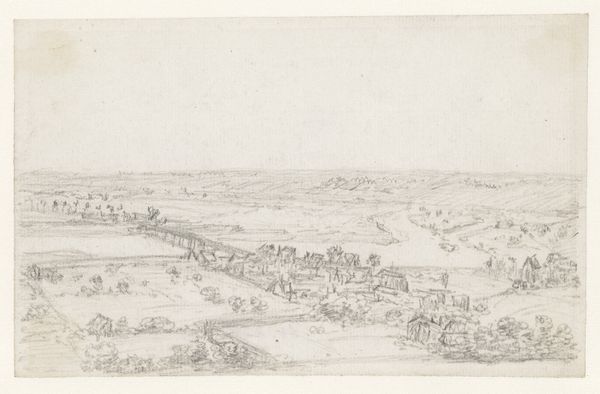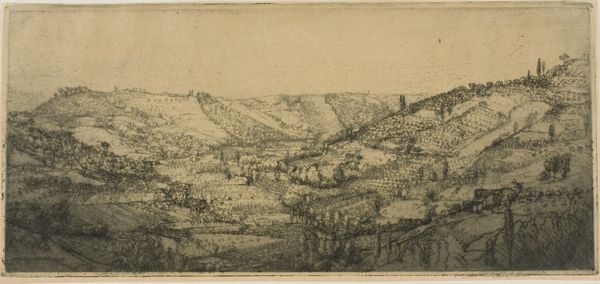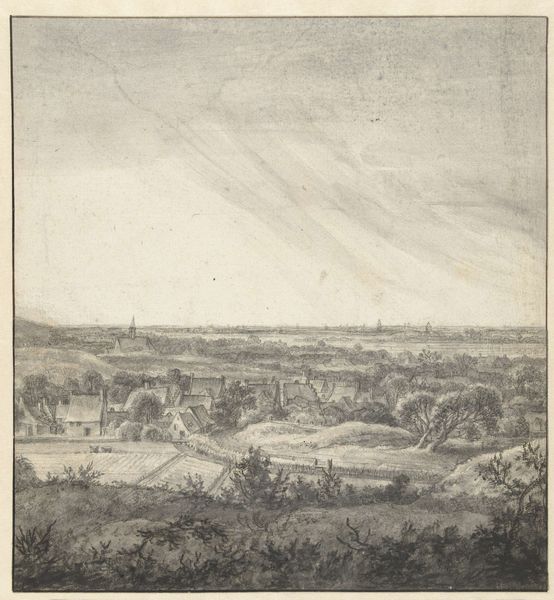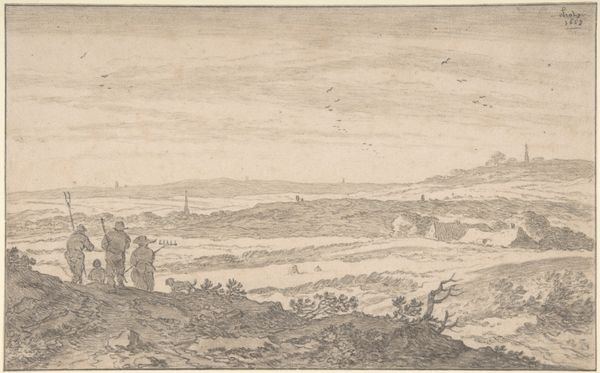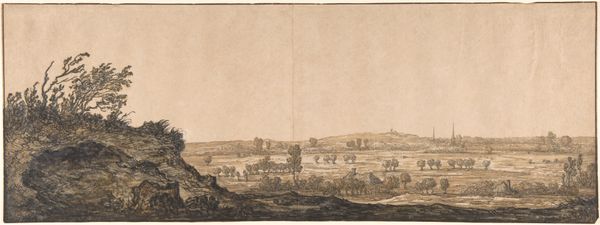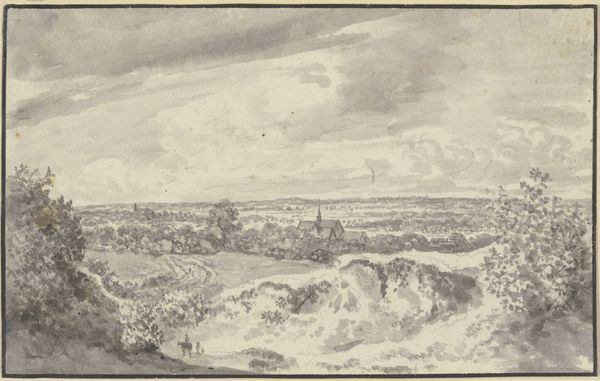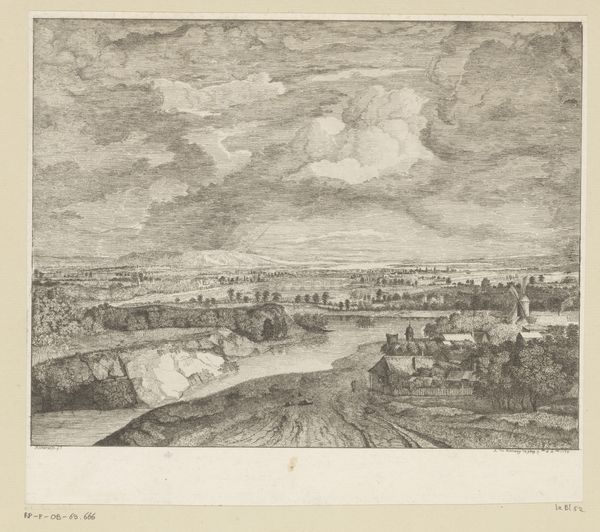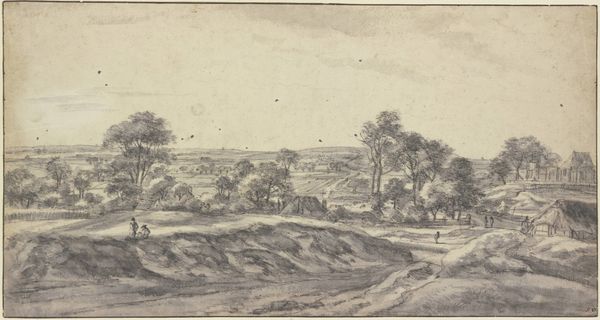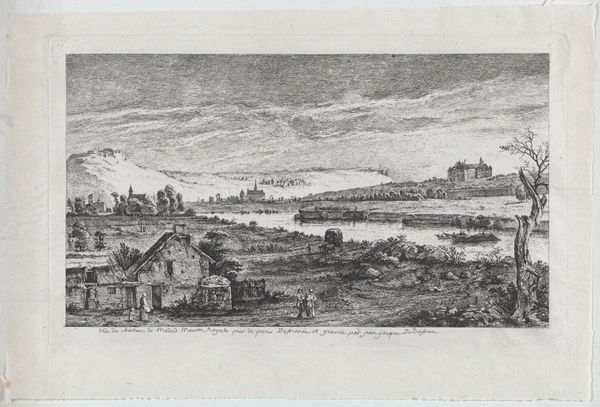
drawing, print, etching, paper
#
drawing
# print
#
etching
#
landscape
#
paper
Dimensions: 121 × 210 mm (image); 124 × 212 mm (sheet)
Copyright: Public Domain
Anthonie Waterloo made this print, A Town in a Valley, using etching, a process that involves biting lines into a metal plate with acid, and then using that plate to transfer an image onto paper. Look closely, and you'll see how the etched lines create a remarkable sense of depth. The density of the lines gives the impression of shadow and texture, pulling us into the valley. It's a labor-intensive technique; each line had to be carefully drawn and etched. Etching was part of a broader culture of printmaking that allowed for the wide dissemination of images. Consider how this print fits into the context of 17th-century Holland, a hub of trade and commerce. The demand for art was rising among the middle classes, and prints like this one offered an affordable way to acquire images. Waterloo's skill in manipulating the etching process allowed him to capture the beauty of the Dutch landscape and make it accessible to a wider audience. Ultimately, the print represents a meeting point of artistic skill, material process, and market demand.
Comments
No comments
Be the first to comment and join the conversation on the ultimate creative platform.
